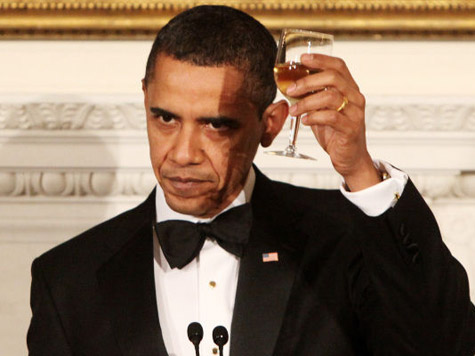The fact that the LA Times has published photographs of American troops in Afghanistan posing with Taliban body parts is in and of itself utterly contemptible. The images add nothing to the public’s understanding of the war and will only serve to inflame NATO’s enemies in Afghanistan (not that they need much inflammation), as well as increasing hostility amongst ordinary Afghans toward the presence of US and other international troops in their country — a point that U.S. Defense Secretary Leon Panetta made when expressing his “regret” that the newspaper had published the images against the Pentagon’s wishes.
But what makes the publication of these images even worse is the rich and multi-faceted hypocrisy of the Times journalists. Over at Big Peace, AWR Hawkins has already raised the rhetorical question as to whether the Times and the mainstream media in general will cover this story — coming as it does under President Obama’s stewardship of the war in Afghanistan — as aggressively as they pursued the Abu Ghraib scandal in order to attack the Bush administration. But there’s further hypocrisy at play, and it has to do with the wider issue of the media’s role in post-modern society.
No doubt the Times would argue that their job as objective journalists does not involve their factoring into editorial decisions such judgments as whether or not publishing a given story would have a detrimental effect on the nation’s war effort. We’ve come a long way since the Second World War, when Ernie Pyle lived alongside the US servicemen on whom he reported, shared their rations, wore the same uniform and ultimately gave his life in the service of his country as so many of them did. Today such ‘partisanship’ would be frowned upon by a trans-national media for whom American troops are just that – American troops – rather than our boys.
So if it’s objective truth we’re expected to be concerned with, rather than taking sides, how well does the LA Times come up to scratch in other areas? Say, with regard to releasing material which could be damaging to a sitting President? The newspaper has videotape of a 2003 dinner in Chicago honoring Rashid Khalidi, at which then-state senator Barack Obama spoke glowingly about his friendship with the Palestinian-American academic and activist. It has been suggested that the tape could offer some revealing insights into President Obama’s real thinking on Middle East issues. However, the Times refuses to release the tape, citing loyalty to ‘confidential’ sources.
When it comes to speaking truth to power, Presidents are the ultimate target. From Watergate to Monica Lewinsky to President Bush’s DUI conviction, the media has not been shy about holding a serving chief executive’s feet to the fire. To what extent these various endeavors have been motivated by a yearning for truth, a quest for Pulitzers, or the pursuit of ideological agendas is open to debate. (While the media at the time of Watergate harbored a pathological loathing of President Nixon, the Bush DUI story was broken by a Fox News affiliate rather than the liberal media elites who were so relentless in their attacks on his presidency.) But today the LA Times, along with most of the mainstream media, is unabashedly in the tank for Obama’s re-election and will not let the question of whether it might be in the public interest to release the Khalidi video in an attempt to get at the truth of the matter stand in the way of achieving their objective.
As for those photos from Afghanistan, one could even argue that, if they are able to make the war more controversial and unpopular in the US, the Times might in fact be furthering their ideological agenda by giving cover to Obama’s cynical political desire to bring American troops home from Afghanistan, regardless of whether the job is finished. And if this means that those troops will in the meantime face a more motivated enemy and a more hostile civilian population, well that’s just too bad. In the US military cemetery on Okinawa, Ernie Pyle must be spinning in his grave.

COMMENTS
Please let us know if you're having issues with commenting.